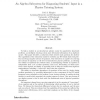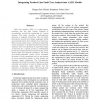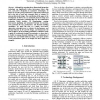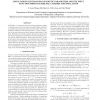63 search results - page 10 / 13 » A Quantitative Model of Capabilities in Multi-Agent Systems |
AIEDU
2005
13 years 7 months ago
2005
To help a student in an introductory physics course do quantitative homework problems, an intelligent tutoring system must determine information of an algebraic nature. This paper...
HASE
2007
IEEE
14 years 1 months ago
2007
IEEE
Fault Tree Analysis (FTA) is a safety-analysis technique that has been recently extended to accommodate product-line engineering for critical domains. This paper describes a tool-...
ASPDAC
2006
ACM
14 years 1 months ago
2006
ACM
- Although the emerging three-dimensional integration technology can significantly reduce interconnect delay, chip area, and power dissipation in nanometer technologies, its impact...
ISBI
2004
IEEE
14 years 8 months ago
2004
IEEE
DCE-MRI is a noninvasive functional imaging technique capable of assessing tumor microvasculature clinically. Major limitations associated with conventional region-of-interest (RO...
IGPL
2010
13 years 6 months ago
2010
Reputation and trust are useful instruments in multi-agent systems to evaluate agent behaviour. Most of the works on trust and reputation adopt a quantitative representation of the...




